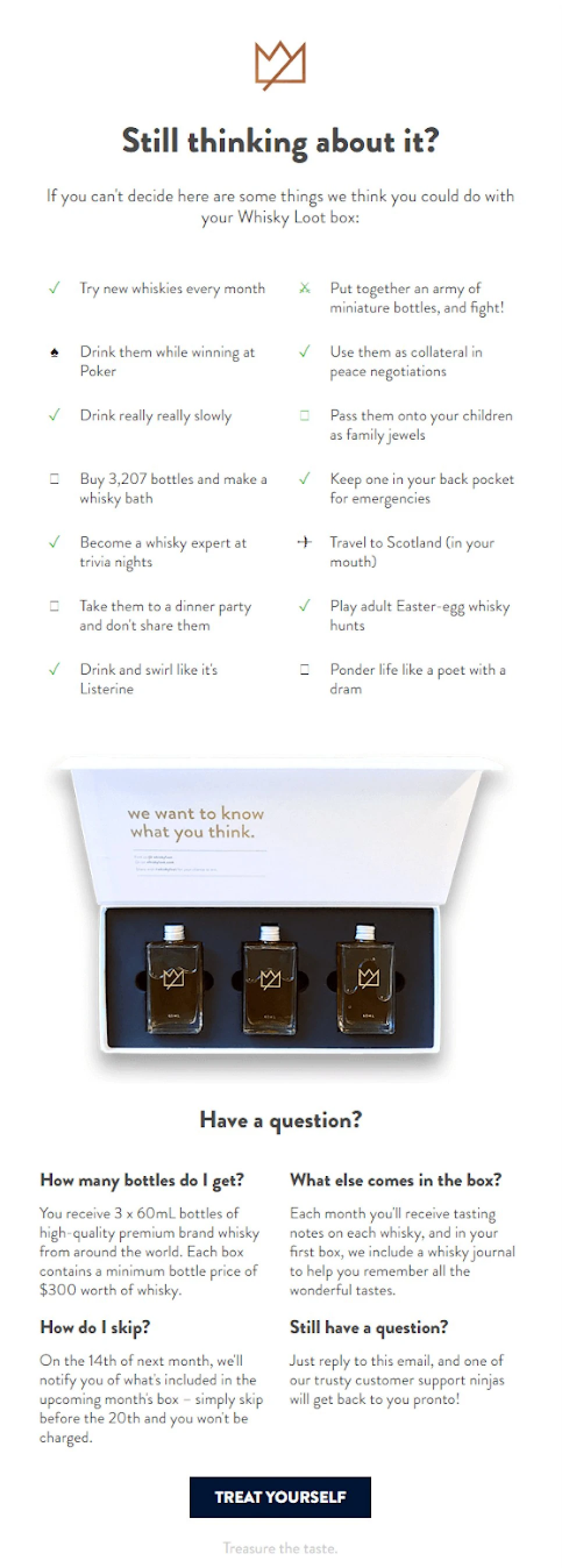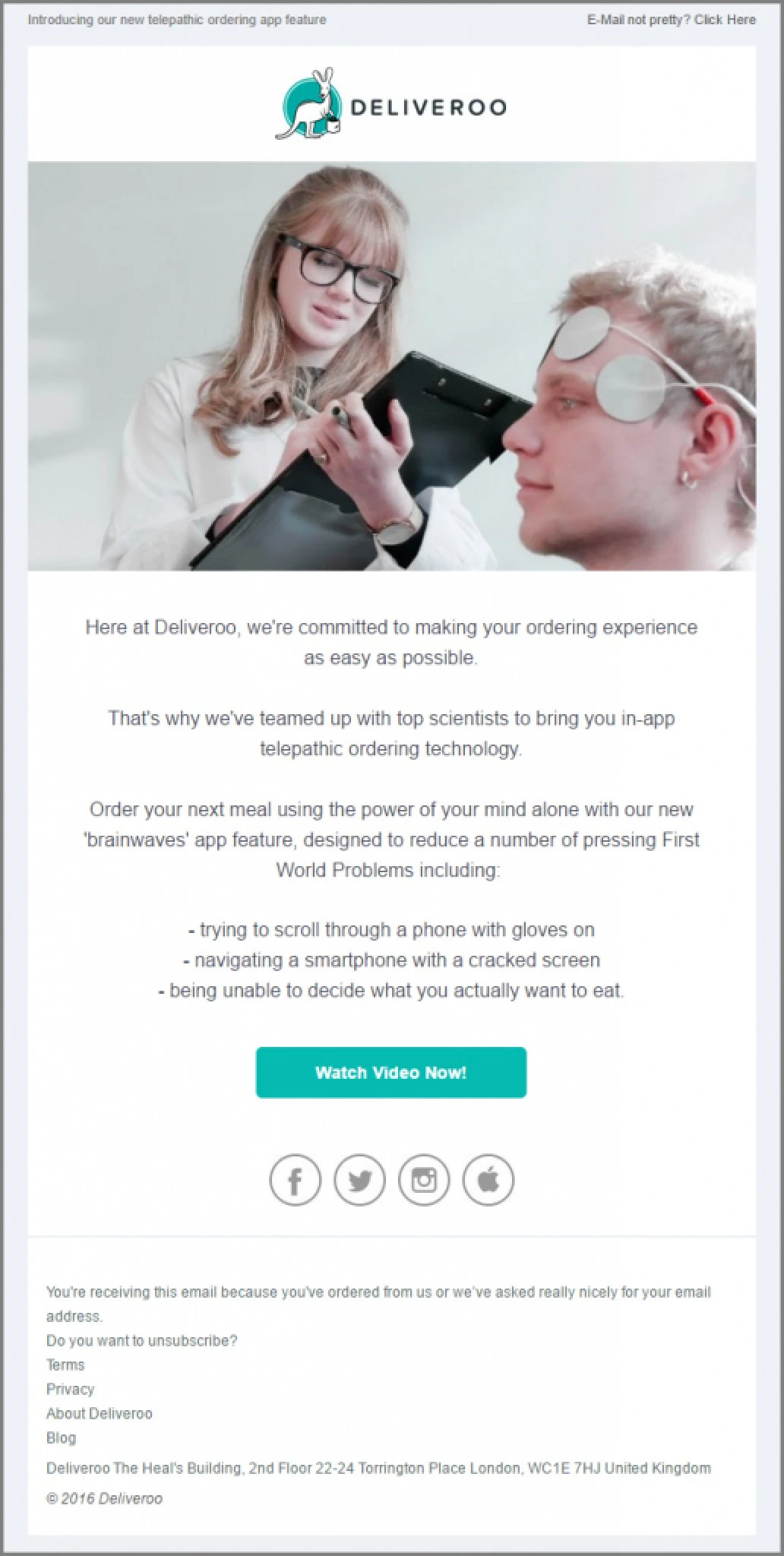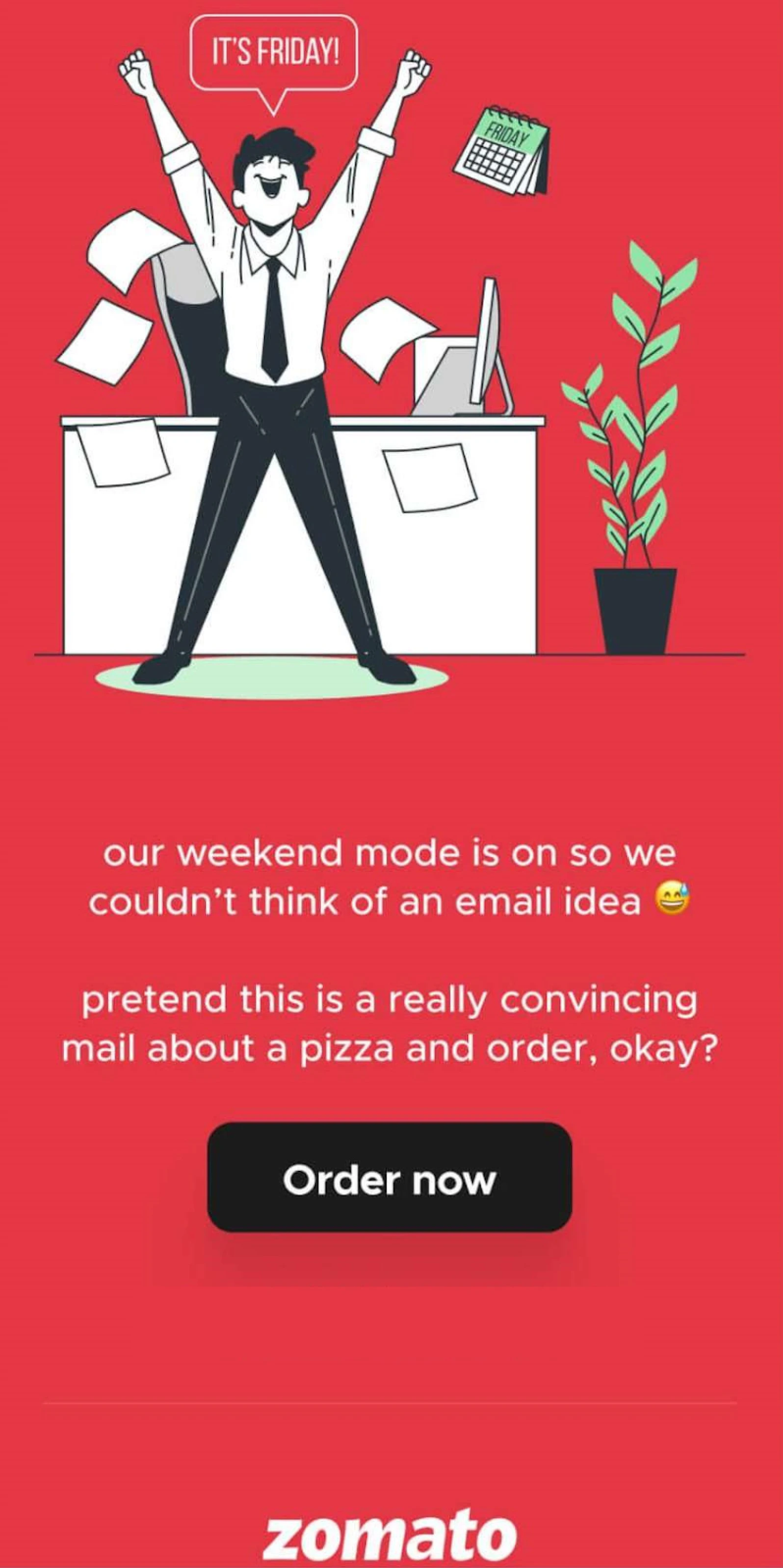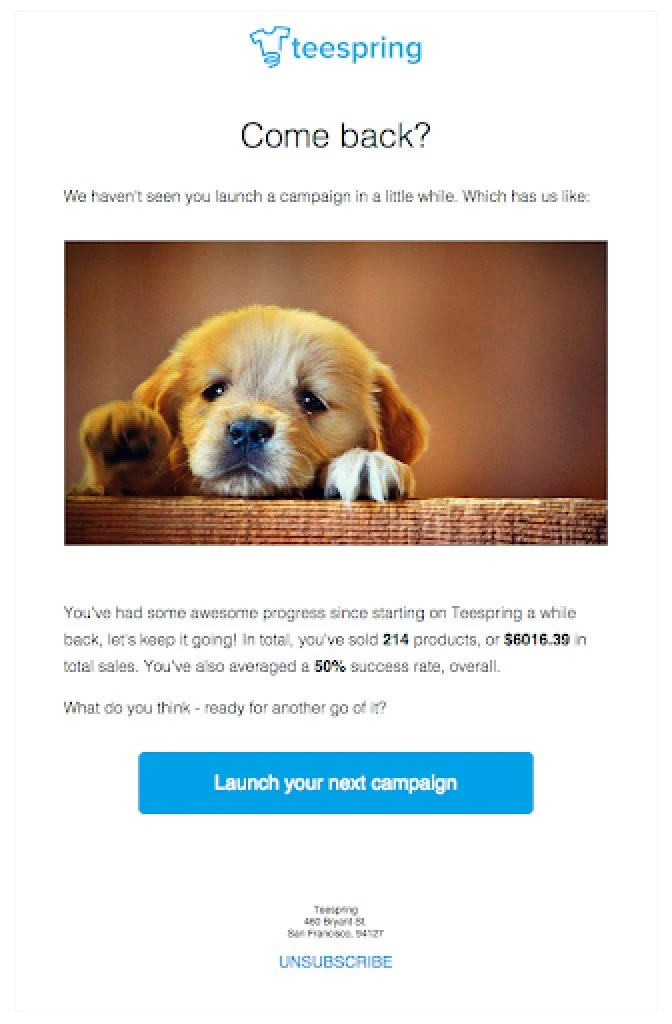Guide to using humor in your email marketing (with 7 examples)

Your emails reflect your brand personality. While sending useful emails should be your top priority, you also need to find ways to tap into the reader’s emotional human side as well.
Depending on your brand voice, you can add elements that portray a range of emotions like optimism, love, fear, nostalgia and trust. You can also make your emails fun by adding a tinge of humor to them.
Your subscribers are inundated with emails every day. So, what better way to stand out than by putting a huge smile on their faces? That’s the magic of “humor” in email marketing. But take note: not all humor works!
Let’s go through the do’s and don’t of using humor and check out some email examples that will put you on the right track.
Do's and don'ts
1. Make sure it’s relevant to your business
If you want to start incorporating a little bit of humor in your newsletters, it’s important to keep these 3 things in mind:
Your brand personality and niche
Your audience (aka the people you are targeting)
The reason why you are sending the email in the first place
You should avoid going overboard with adult or topical humor that might offend your readers. If you are just starting off with sending a few funny emails, try using day-to-day jokes or known puns first.
For example, saying something like “I don’t trust those trees… because they seem kind of SHADY” is light humor that would make your subscribers smile without trying too hard.
2. Go beyond “fun” and entice the subscriber to convert
The purpose of using humor in emails is, of course, to spread smiles. However, they must also prompt the next action. Humor without a purpose can lead to being just “another joke” that people will forget about. Instead, your emails should use humor in such a way that your subscribers will not only remember your brand but will also be encouraged to take the next action.
For example, if you run an e-commerce store, you could start out by trying to use humor in your cart abandonment emails. Then you can analyze how your cart abandoners are responding to it and if the response is good, you can start creating something similar in your other email workflows.
3. Play it safe and A/B test
Try sending out two variations first. One with a more serious tone (or your usual tone) and another with a more humorous tone. Monitor the metrics and figure out how much your recipients are resonating with these emails. If your humorous email gets a better response rate or positive engagement, you can start including the flavor of humor in your email recipe.
Alternatively, you can just ask your friends or colleagues if they think your joke will have a positive impact from your subscriber’s perspective. Be open to receiving feedback from all sources. If they think that your subscribers will not be receptive to your humorous marketing efforts, then you should revise your strategy.
4. Strike the right balance between funny and professional
Not every email that you send should be humorous (unless you are a professional comedian). There’s a thin line between fun and professionalism. The fun element in your emails shouldn’t be used to the extent that your prospects or customers stop taking you seriously.
People get bored easily. If your subscribers keep receiving the same kind of promotional emails all the time, they will opt out or simply stop engaging with your brand. Humor can be that breath of fresh air that will stand out in their inbox and make them open your emails again and again.
Funny email examples that work
Now that you know the best practices of creating funny emails, let’s show you how you can start adding humor to your emails with some great examples.
1. Whisky Loot’s cart abandonment email
Cart abandonment emails provide a great scaffold to add humor. See how Whisky Loot used the power of humor in their cart abandonment email with a fun checklist of the activities their subscribers can do if they use the Whisky Loot Box.

2. Really Good Emails’ funny subject line
Humor is not always about sharing a joke. It can even be used as a pun in your email subject line and copy. Take a look at this example from Really Good Emails where they have written Creepin’ instead of Keepin’ and added a spooky feeling to their Halloween email.

3. Deliveroo’s funny April Fools' Day email
April 1st is a wonderful day to see if humor works well for your subscribers or not. Deliveroo, a food delivery platform, sent out a witty email on this occasion. They have rolled out an imaginary telepathic technology for ordering food through their app. It would surely crack up the reader and get them to take action by clicking on the “Watch the Video Now!” button. It doesn’t only make the recipients smile but also makes them curious enough to engage with the email.

4. Poncho’s funny way of providing weather updates
Instead of using humor simply in your email copy, you could go a step further and include funny visuals in your email campaigns. Humor can make your newsletters interesting to read for your subscribers and improve your engagement rate too. Take a look at how Poncho sends out custom email weather alerts in a unique way.

5. Really Good Emails’ funny call-to-action (CTA) button
Besides the email subject line, copy and visuals, you can add a pinch of humor even to your CTAs.
See how Really Good Emails has made their CTA funny. It is so carefully placed that it’s impossible to not see it.
Another important element is that their CTA is in perfect sync with the context of the copy.

6. Funny promotional email by Zomato
If you want to position yourself as a friendly brand through your marketing emails, you can add a pinch of your fun side to your newsletters.
Check out how Zomato has added humor in their newsletter to encourage people to place an order for pizza. Even if their subscribers don’t end up placing an order, it will surely bring a smile to their faces. That’s pretty awesome too!

7. Re-engagement email by Teespring
Re-engaging inactive subscribers can be a challenging task because you have to reach out to people who have not engaged with you in a while. Try adding a humorous tone to your win-back emails to tickle the funny bone of your subscribers and encourage them to connect with your brand again. The best part of sending a funny re-engagement email is that some humor might just do the trick to bring them back.
Take a look at this email by Teespring. See how they have cleverly used the image of a sad puppy for emotional appeal. Besides, they also share some interesting numbers that catch the reader’s attention and prompt them to take action. After all, who can ignore a cute puppy picture combined with engaging copy?

8. The funny chat screenshot by Tough Mudder
You can also incorporate humor by using funny (punny) animations or dynamic images. If your target audience resonates with funny memes, emojis or GIFs, why not serve them more of the same?
Here’s a good example from Tough Mudder where they have taken a hilarious approach to promote their discount offer.
That’s one of the best uses of puns in emails.

Over to you
Crafting an effective funny email can be a tricky affair. Of course, laughter is the best medicine and one of the ways to a subscriber's heart. Humor works as the antidote to help the subscribers get over the humdrum of life. Brands that use humor not only gain a strong following among the millennials but also appeal to subscribers from other generations.
Humor can draw the subscriber's attention and even inspire people to "forward" your emails to other people. If you want to start a buzz and build brand visibility, try adding a pinch of humor to your emails as well as other marketing channels. Your deeper subscriber engagement with bring a smile to your face.

Kevin George is Head of Marketing at Email Uplers, one of the fastest growing custom email design and coding companies, and specializes in crafting professional email templates, PSD to HTML email conversion and free HTML email templates. He loves gadgets, bikes, jazz and eats and breathes email marketing. He enjoys sharing his insights and thoughts on email marketing best practices on his blog.
